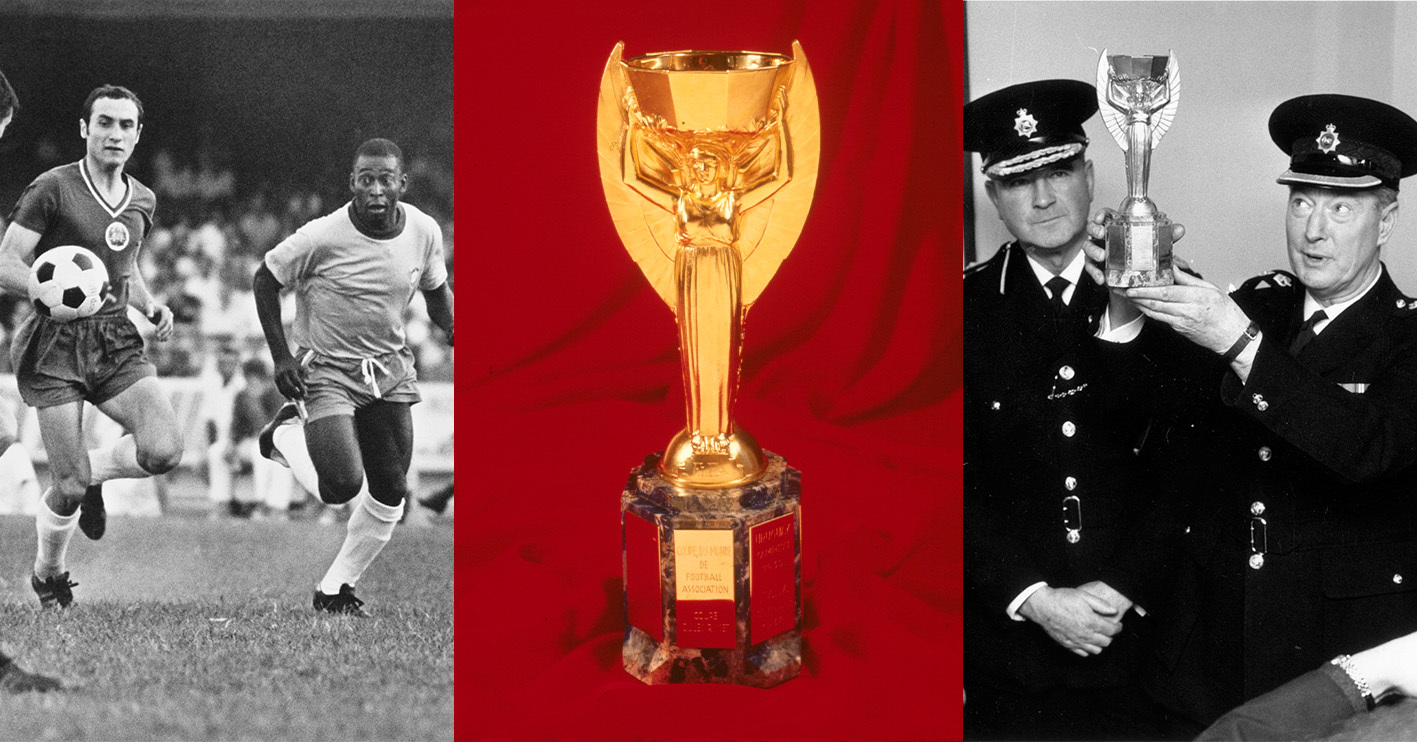It was the most treasured trophy of its kind in existence, won only by eight nations since its first appearance in 1930. So how did it happen that the original World Cup trophy, one of the most highly-guarded items in the world, came to be stolen – not once but twice? On the anniversary of its very last sighting, we’re taking a look back at the intrigues of the long lost Jules Rimet Trophy.
Inspired by the gods
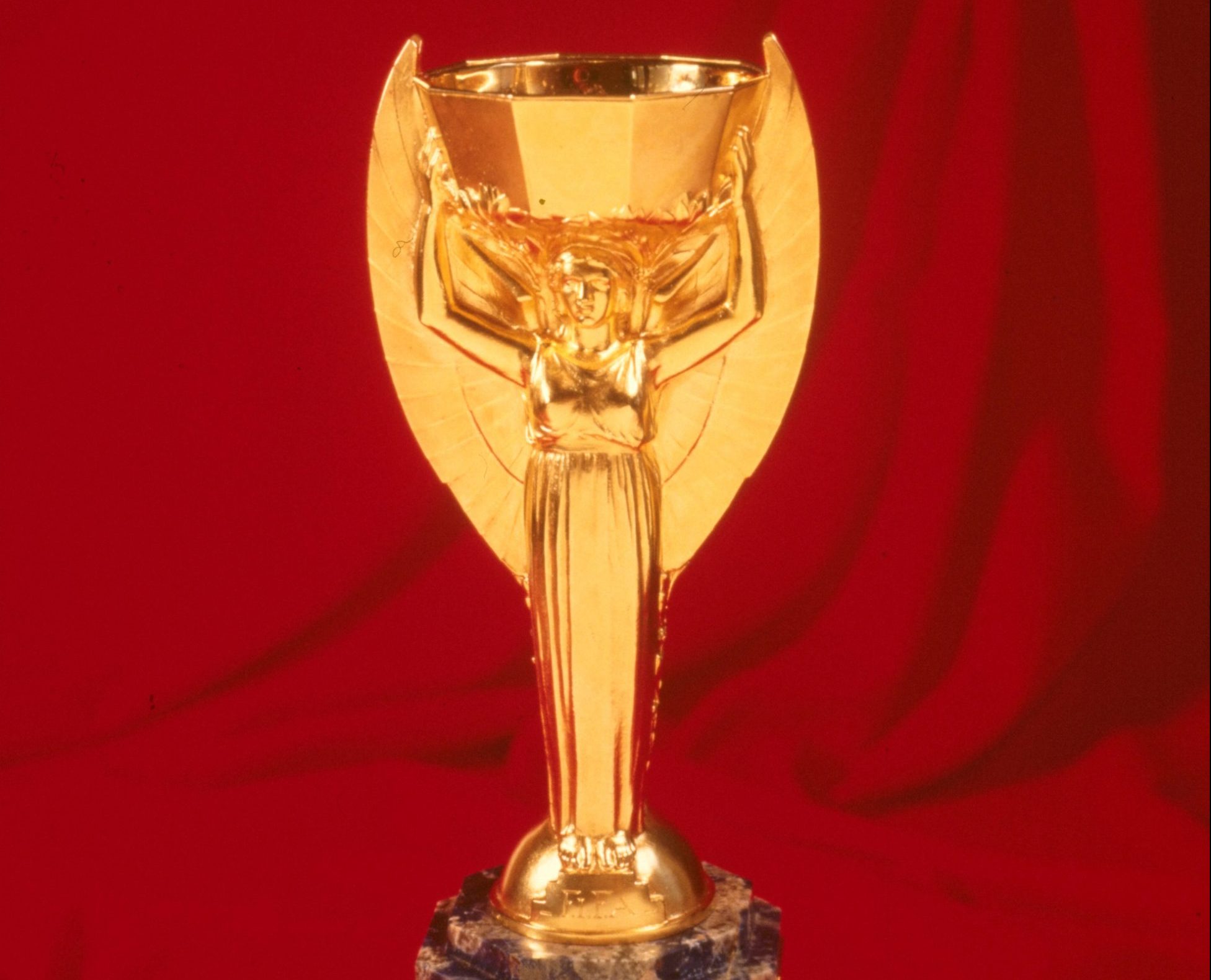
When asked to picture the Wold Cup trophy, most people would likely describe a golden orb held up by two figures. But this version of the famous statuette, made from 18-carat gold and fully named the FIFA World Cup Trophy, has only been around since 1974. The first ever World Cup for men’s football had a different design entirely. It showed an angelic winged figure with both hands aloft: Nike, the Greek goddess of victory. Named simply ‘Victory’, it was designed by the French sculptor Abel Lafleur.
Lafleur took inspiration for the design from an ancient statue known as the Winged Victory of Samothrace that resides in the Louvre. (This same statue helped to inspired the famous Rolls-Royce bonnet ornament, The Spirit of Ecstasy.)
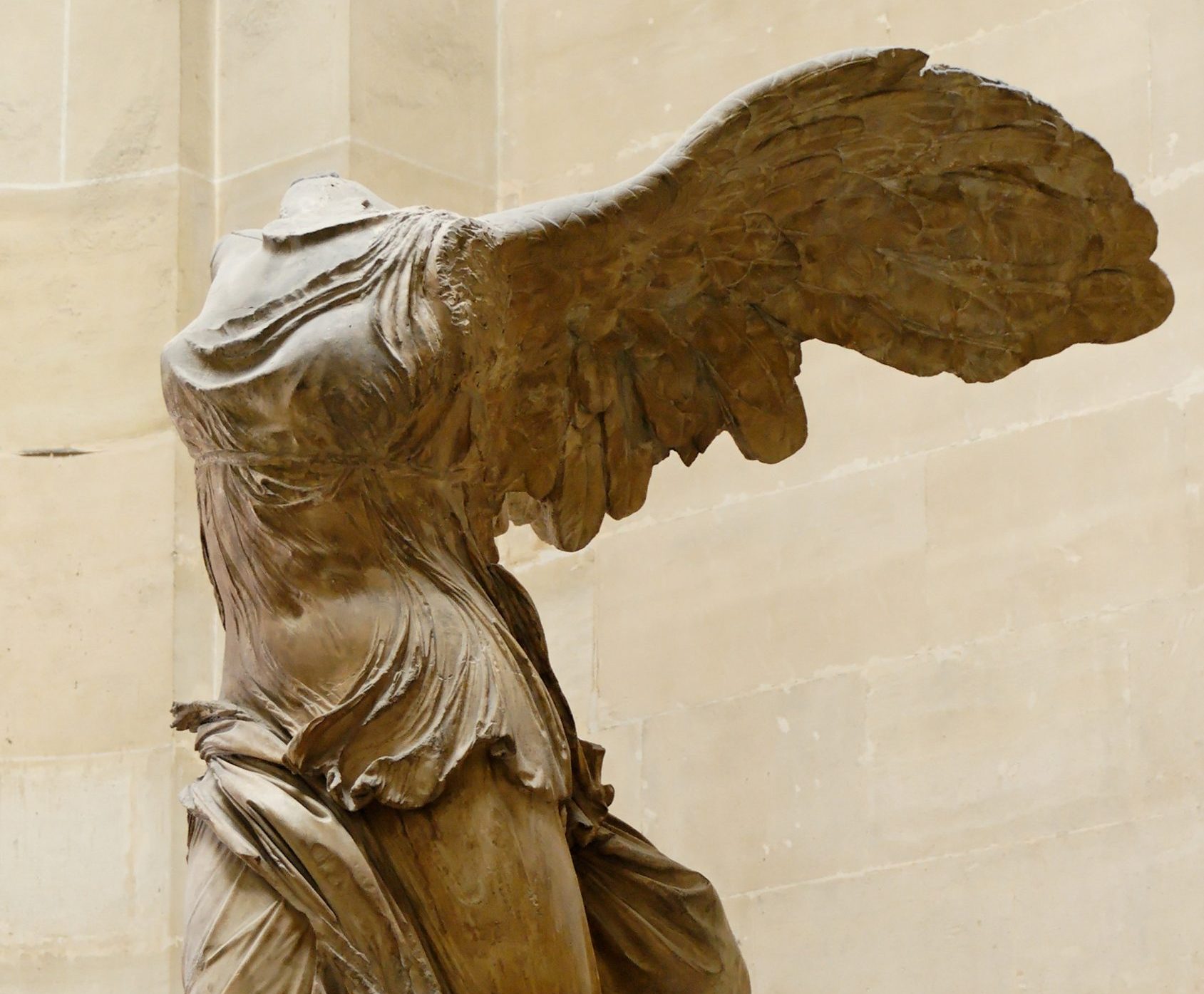
Unlike the solid-gold modern World Cup, Victory consisted of sterling silver with gold plating. Its base was made from lapis lazuli, a rich blue semi-precious stone. At 35 centimetres tall and 3.8kg, it was slightly smaller and about half the weight of the current World Cup trophy.
The inaugural World Cup took place in Uruguay in 1930, and Victory travelled on the Conte Verde ocean liner from France to South America, stashed in the luggage of FIFA president Jules Rimet. It was accompanied on this voyage by footballers from France, Romania and Belgium. The first nation to claim Victory was Uruguay. Credited as the World Cup’s creator, Jules Rimet remains FIFA’s longest-serving president to date, holding office for 33 years. He was nominated for a Nobel Peace Prize in 1956. Upon his death in the same year, FIFA chose to rename Victory the Jules Rimet Trophy in his honour.
Hidden from the Nazis in a shoe box
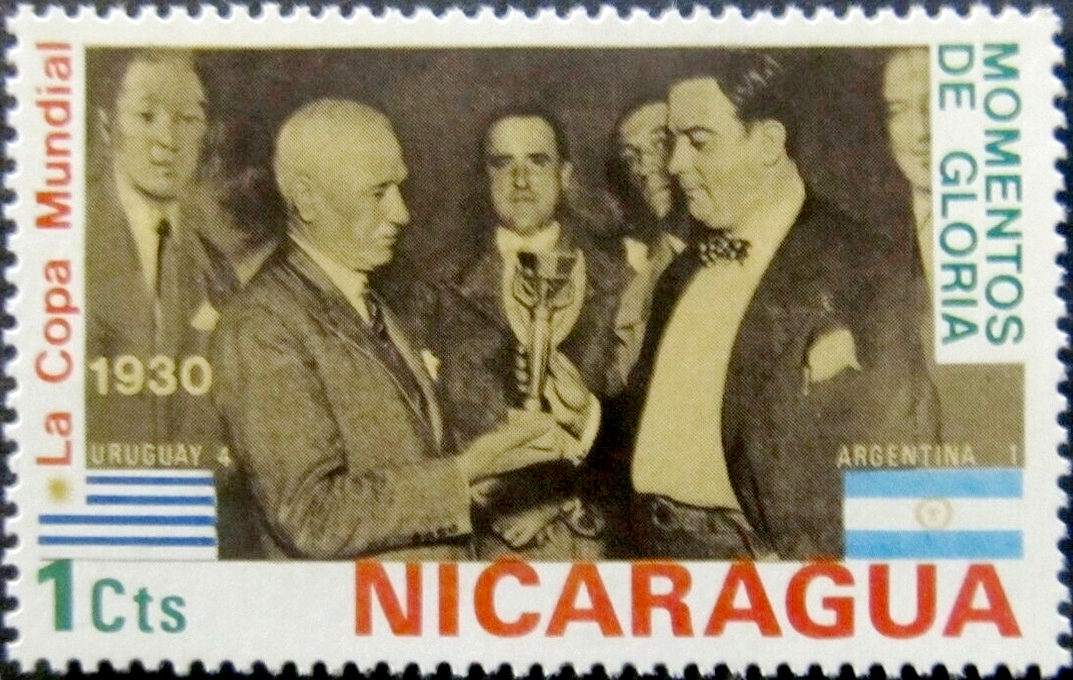
This 20th century spirit of diplomacy was obviously not to last. When the Second World War broke out, Italy were the reigning football champions. In 1938, the plucky Ottorino Barassi, Italian vice president of FIFA, managed to smuggle the trophy out of a bank in Rome and transported it to a hotel room in France. When Nazi officials came knocking at his hotel room door, he hid the treasure in a shoe box under his bed. He used this same hiding place to protect the trophy from the Nazi authorities for the entirety of World War Two. In fact, Barassi remained the trophy’s guardian until the World Cup’s 12-year hiatus came to an end in 1950.
Three World Cups later, Brazil won the trophy in Sweden. Onlooking photographers wanted a better view of the Jules Rimet Trophy, and at their request, the elated Brazilian captain Hilderaldo Bellino raised it up into the air. This triumphant gesture has been imitated by every victorious captain since Bellino.
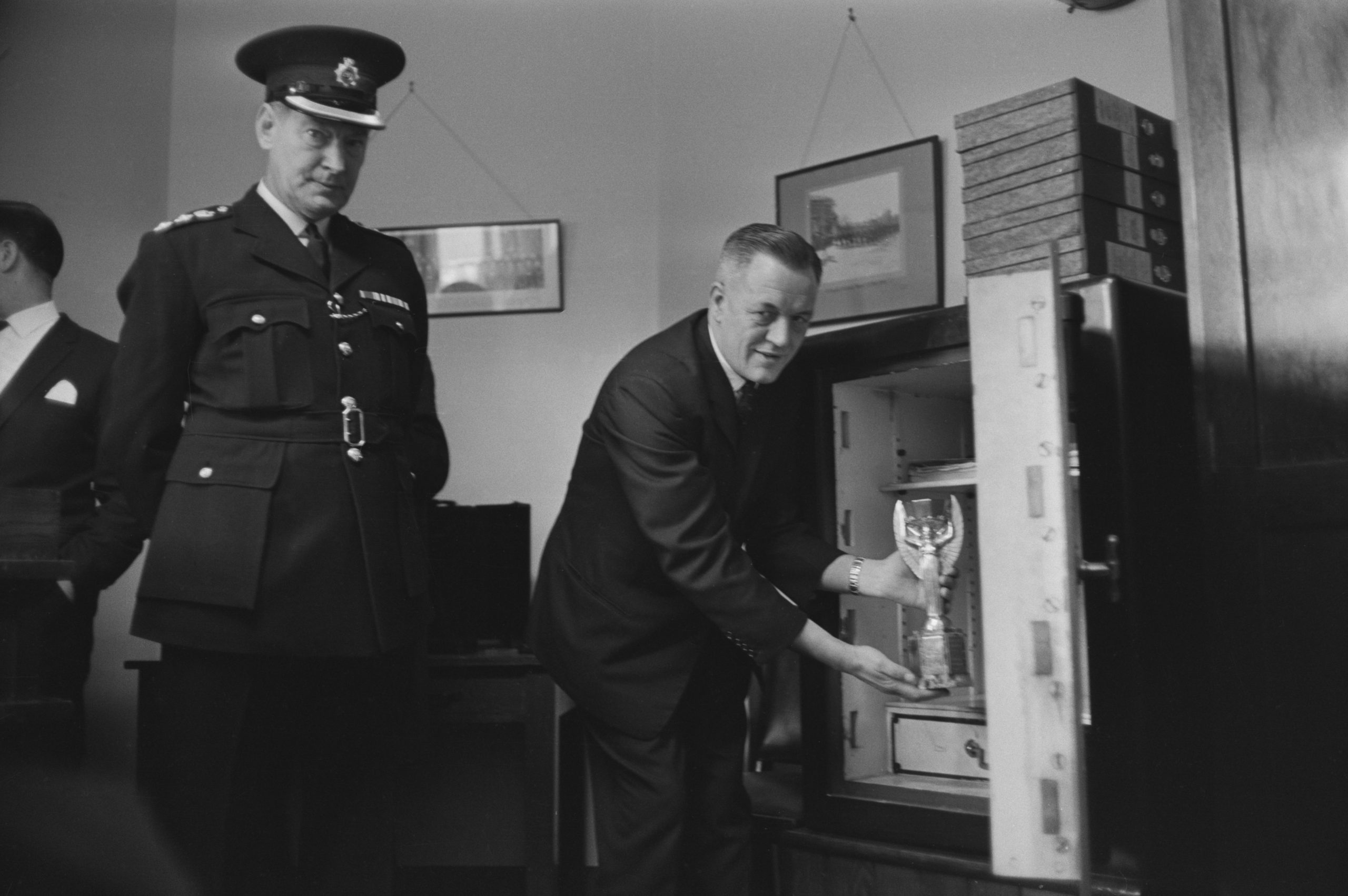
The Jules Rimet Trophy was once more thrown into jeopardy in 1966, while awaiting the World Cup in England. It was displayed to the public amid a stamp exhibition at Methodist Central Hall in Westminster. Guards at the Hall were under strict instruction to watch the trophy in pairs at all times, but by day two of the exhibition, 20th March, they weren’t keeping a close enough eye on it. Visitors flooded in for a church service, which was held in a separate room.
At midday, the guards checked the building’s rear doors and discovered that they had been forced open. Rushing to the cabinets, guards were horrified to find only shattered glass. With only four months left until the tournament, British authorities and the media reached fever pitch over the missing treasure.
Pickles, the ‘most unlikely football hero’

As the search intensified, Football Association chairman Joe Mears received a ransom note from a figure known simply as ‘Jackson’. It read, “Dear Joe Kno [sic] doubt you view with very much concern the loss of the world cup… To me it is only so much scrap gold. If I don’t hear from you by Thursday or Friday at the latest I assume it’s one for the POT.”
‘Jackson’ demanded £15,000 in £5 and £10 notes – despite the trophy being worth closer to £30,000. Authorities sent an undercover policeman to London’s Battersea Park, in the guise of Mears’ assistant ‘McPhee’, to meet Jackson – who turned out to be British citizen Edward Betchley. This former soldier was arrested and imprisoned for two years, but he was never connected to the theft itself. According to The Guardian, Betchley kept “claiming a man only known to him as The Pole had paid him £500 to act as go-between.”
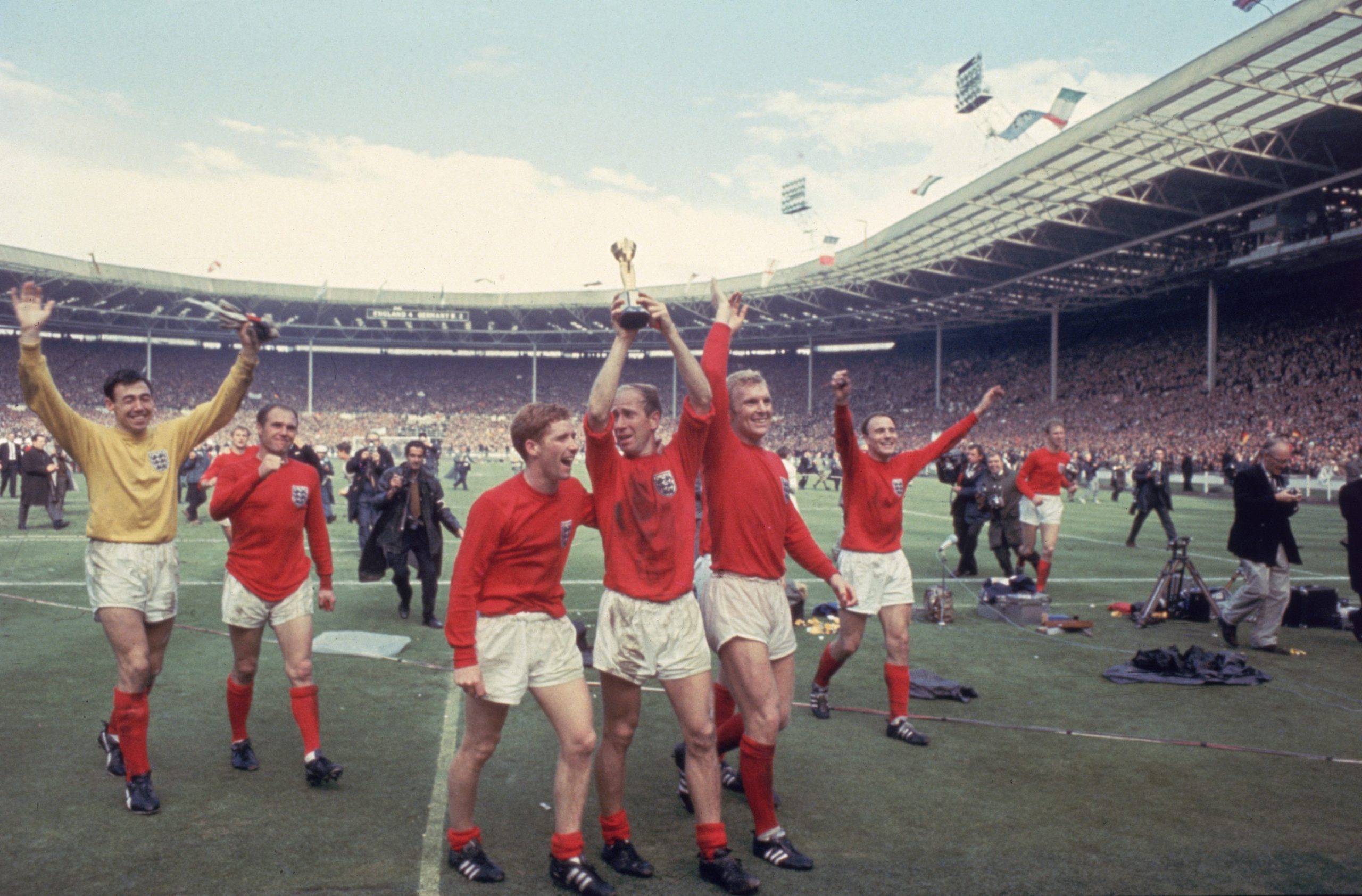
Seven days after the theft, David Corbett was walking his dog Pickles in Beulah Hill, Upper Norwood, in south east London. Pickles caught sight of a strange object. As Corbett later put it, “Pickles pulled me to my neighbour’s car and it was there leaning against a wheel. It was wrapped in newspaper with string all the way up it,” he recalled. “I picked it up and then I put it down because the IRA were around then and I thought it might be a bomb.” Instead, the package contained the intact Jules Rimet Trophy. To this day, it is a mystery how and why the precious item was abandoned in the street.
Pickles scored a £5,000 reward for his family, and has often been described as sport’s ‘most unlikely hero’. He became a national icon as England went on to win the World Cup that year. The champion dog got his own media agent, attended the England team’s victory banquet, and even earned a role in the movie The Spy with a Cold Nose. But the Metropolitan Police had been humiliated by the theft – as had the British authorities. Among the international complainants was Brazilian Sports Confederation official Abrain Tebel, who said: “It would never have happened in Brazil. Even Brazilian thieves love football and would never commit this sacrilege.” These words would prove to be particularly ill-chosen.
‘Spiritual value far greater than its material worth’

Four years of football highs and lows later, Brazil secured its third World Cup victory. To honour this achievement, FIFA retired the Jules Rimet Trophy in 1970, gifting it permanently to Brazil. At this point, the globally recognisable World Cup of the modern era came into being. Meanwhile, the Jules Rimet Trophy sat gathering dust at the Brazilian Football Association’s headquarters in Rio de Janeiro. And in another mystery, it vanished without a trace once more in 1983, never to be seen again.
The trophy was snatched on the night of 19th December 1983, when two thieves attacked the building’s watchman and broke into the bulletproof cabinet with a crowbar. It later transpired that the thieves had plotted the attack whilst playing cards at their local bar.
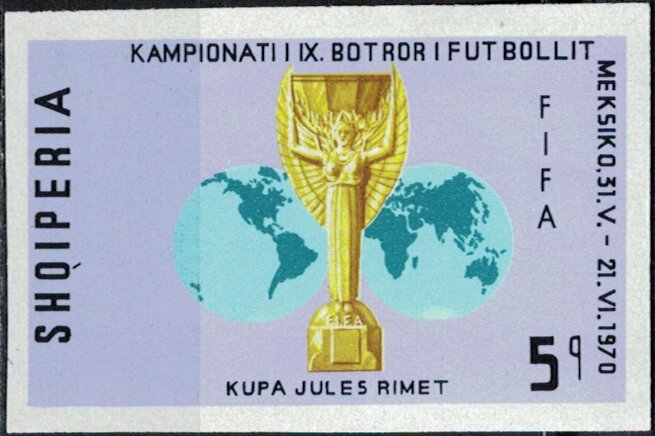
One safe expert, Antonio Setta, was the link that led police to banker Sérgio Pereira Ayres, the brain behind the operation. After the theft, Setta came forward to claim Ayres had attempted to hire him. Setta said he refused the job because his brother had passed away from a heart attack after Brazil won the trophy. To commit the crime, Ayres instead hired a former policeman, Francisco Rivera, and a decorator named José Luiz Vieira. They also swiped the trophies Equitativa and Jurrito from the Brazilian FA headquarters.
All three men were apprehended and sentenced to several years in jail, but later fled from authorities. Ayres has claimed he suffered torture at the hands of Brazilian police and was arrested again in 1994; Vieira was recaptured in 1995; and Rivera was murdered in a Santo Cristo bar in 1989. Setta died in a car accident before he could testify against the accused.
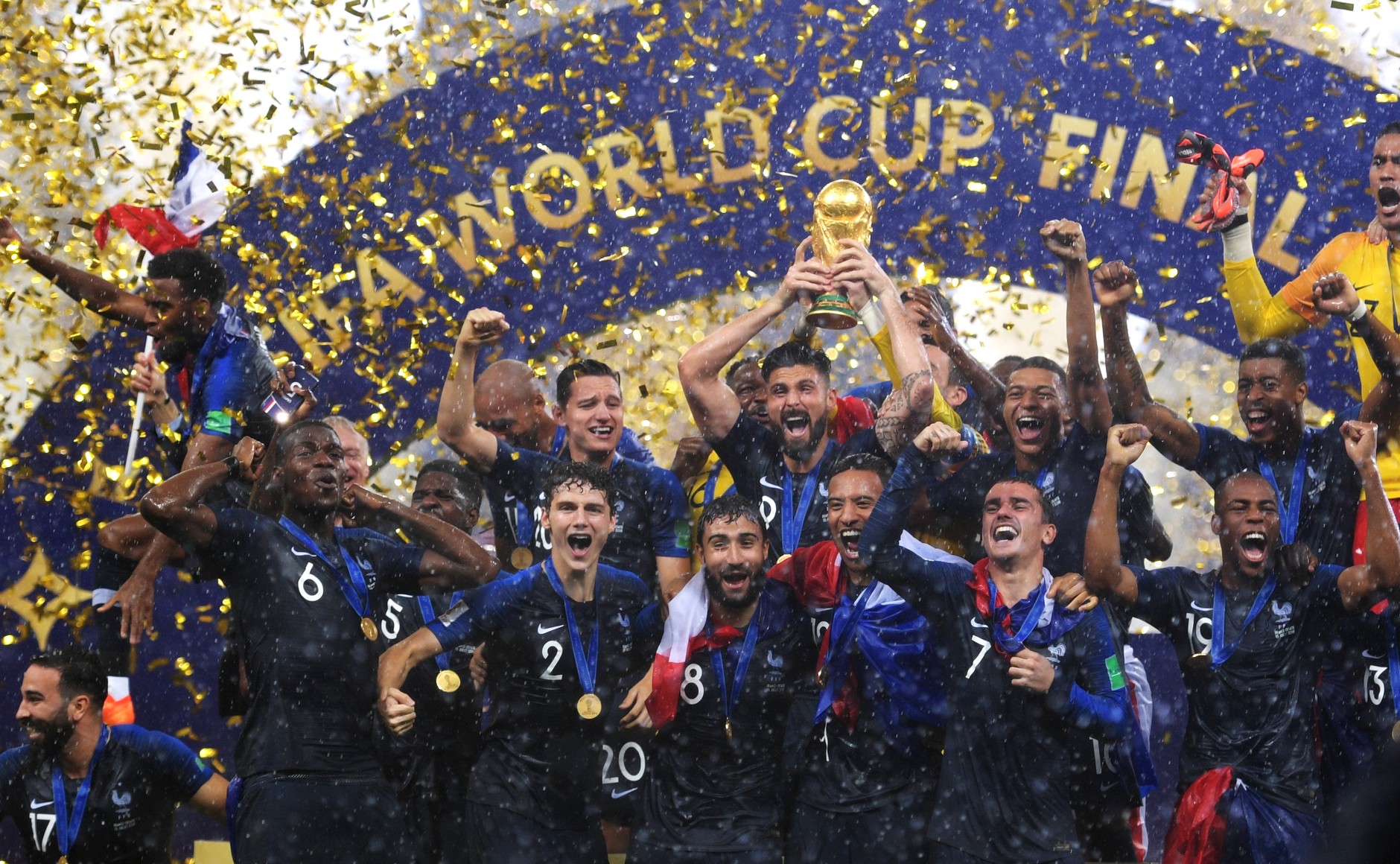
At the time, the Brazilian Football Association’s president, Giulite Coutinho, made an impassioned plea to the public for help uncover the missing trophy, to no avail. “The spiritual value of the cup is far greater than its material worth,” he told the dismayed nation. It has widely been assumed that the Jules Rimet Trophy was melted down and repurposed, rendering it untraceable. However, a few historians and biographers have pointed out one major flaw in this explanation. Despite a common misconception, the trophy is not made from solid gold – only gold plate. As scrap metal, the trophy would be a great disappointment.
Guardian journalist Paul Gadsby has suggested: “If it wasn’t taken to a furnace it could be anywhere; hidden on the outskirts of Rio waiting for a pick-up that never happened, tucked away in some dodgy collector’s pokey basement, hidden in a shoebox under someone’s bed.” The final dream for the Jules Rimet Trophy remains its rediscovery.

